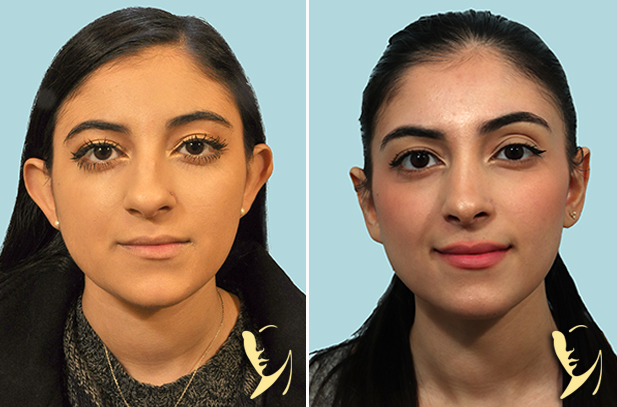Every feature of your face comes in different shapes and sizes – including your ears. But if you’re unhappy with the shape, size, or position of your ears, otoplasty may be right for you. This surgical process changes protruding or prominent ears by “pinning,” or reshaping and refolding. Curious about ear pinning? Check out all you need to know.
For real results from our patients, check out our before and after gallery!
What is ear surgery?
According to facial plastic surgeons, otoplasty (ear surgery) is a surgical process that brings the ears to a harmonious and aesthetically pleasing position. Sometimes, ear folds can be poorly defined, or ears can over-project, causing imbalance to the face. At Robinson Facial Plastic Surgery, Dr. Burke Robinson is an award-winning, Top Atlanta Facial Plastic Surgeon with more than 30 years of experience dedicated to only facial cosmetic surgery and specializes in otoplasty.
During the procedure, a small incision is made behind the ear. Through this incision, the ear is rotated back, excessive cartilage may be trimmed, or incomplete folds may be formed. Permanent or long-lasting internal sutures are used to maintain ear repositioning and ear-fold shaping.
What does recovery look like?
After the operation, a soft, thick dressing is placed on the head for a one day. When the dressing is removed, the ears will be somewhat swollen, and a soft headband is worn at night to protect the ears.
Post-op recovery is quite critical for a positive outcome. So, it’s important to keep a bandage on to protect the area and refrain from any activity that could potentially strain or pull the area. All external sutures in the crease behind the ear are dissolvable. Ears may be numb for the first few weeks, and mild bruising and swelling will likely occur for 7 to 14 days. For the first couple of weeks, it may be uncomfortable to chew harder foods, so consider eating soft foods until you can tolerate harder foods. Prescribed pain medications can be used to ease post-op discomfort.
Who is a good candidate for ear surgery?
Most patients know if they are a good candidate because protruding ears are an inherited trait. In general, a good candidate has an angle between the external ear and the skull of more than 30 degrees. Two different minor malformations of the ear cause this: one is a poorly formed antihelical fold, and the other is an overdeveloped conchal bowl. These two findings can appear in one or both ears.
Ultimately, patients desire more symmetry for facial balancing. While the procedure is commonly performed on children at the age of 5 or 6, adults can receive the treatment as well. The treatment should not be performed on anyone with an active or chronic ear infection.
What are the benefits of ear surgery?
A sense of aesthetic harmony to the face and positive self-perception are two major benefits of ear pinning.
If you’re interested in improving your facial balance with ear surgery, contact us for a consultation today.




